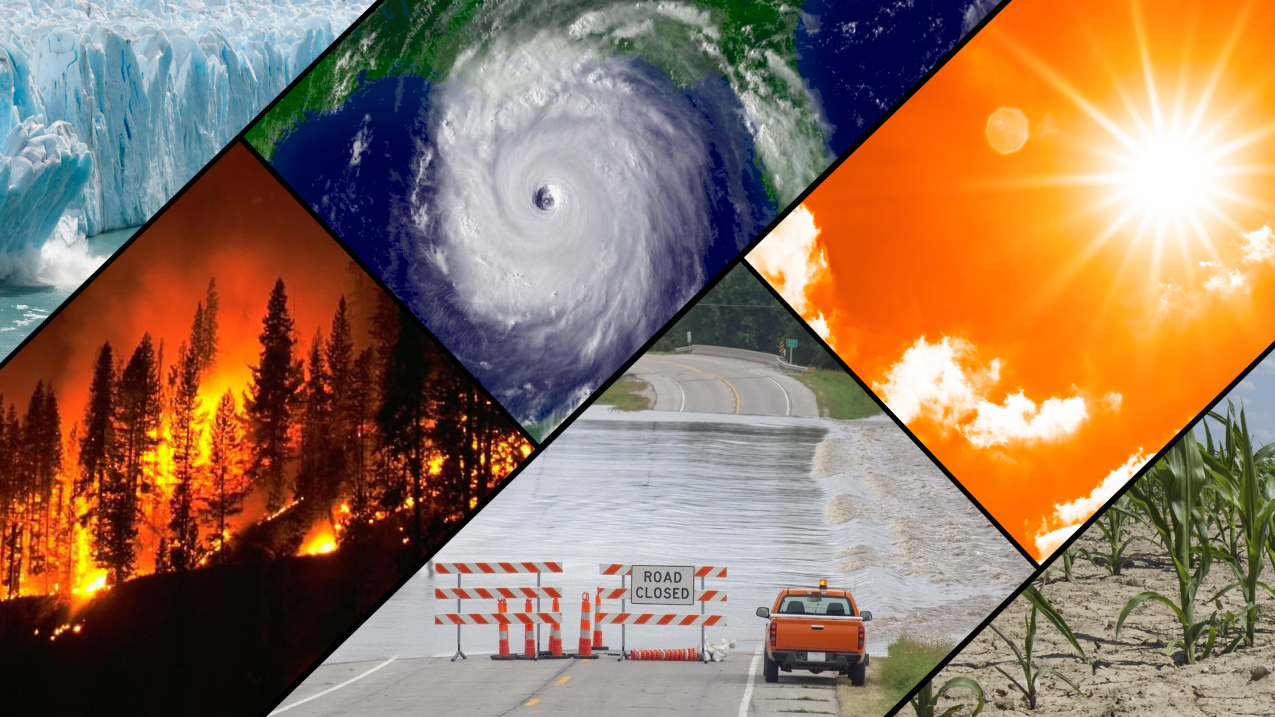Although much of the U.S. has a temperate climate, there is also a wide variety from Arctic tundra in Alaska to the tropical weather in Hawaii and South Florida. The Great Plains are dry, flat and grassy, turning into desert in the Far West and Mediterranean along the California coast.
In the winter, major cities in the North and Midwest can see as much as 2 ft (60 cm) of snowfall in one day, with cold temperatures. Summers are humid, but mild. Temperatures over 100 °F (38 °C) sometimes invade the Midwest and Great Plains. Some areas in the northern plains can experience cold temperatures of −30 °F (−34 °C) during the winter. Temperatures below 0 °F (−18 °C) sometimes reach as far south as Oklahoma.
The climate of the South also varies. In the summer, it is hot and humid, but from October through April the weather can range from 60 °F (16 °C) to short cold spells of 20 °F (−7 °C) or so.
The Great Plains and Midwestern states also experience tornadoes from the late spring to early fall, earlier in the south and later in the north. States along the Atlantic coast and the Gulf of Mexico may experience hurricanes between June and November. These intense and dangerous storms frequently miss the U.S. mainland, but evacuations are often ordered and should be heeded.
The Rockies are cold and snowy. Some parts of the Rockies see over 500 inches (1,300 cm) of snow in a season. Even during the summer, temperatures are cool in the mountains, and snow can fall nearly year-round. It is dangerous to go up in the mountains unprepared in the winter and the roads through them can get very icy.
The deserts of the Southwest are hot and dry during the summer, with temperatures often exceeding 100 °F (38 °C). Thunderstorms can be expected in the southwest frequently from July through September. Winters are mild, and snow is unusual. Average annual precipitation is low, usually less than 10 in (250 mm). However, at higher elevations, winters are much more severe, with frequent snowfall.
Cool and damp weather is common much of the year in the coastal northwest (Oregon and Washington west of the Cascade Range, and the northern part of California west of the Coast Ranges/Cascades). Summers (July through September) are usually quite dry with low humidity, though, making it the ideal climate for outdoor activities. Rain is most frequent in winter, snow is rare, especially along the coast, and extreme temperatures are uncommon. Rain falls almost exclusively from late fall through early spring along the coast. East of the Cascades, the northwest is considerably drier. Much of the inland northwest is either semi-arid or desert, especially in Oregon.
Northeastern and Upper Southern cities are known for summers with temperatures reaching into the 90s °F (32 °C) or more, with extremely high humidity, usually over 80%. This can be a drastic change from the Southwest. High humidity means that the temperature can feel hotter than actual readings. The Northeast also experiences snow, and at least once every few years there will be a dumping of the white stuff in enormous quantities.
Source: wikivoyage.org

